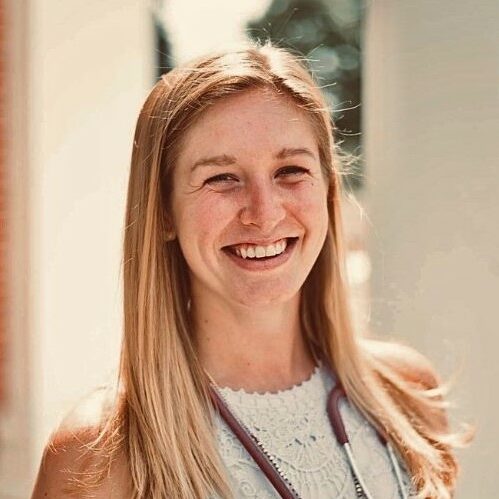What Is a Healthcare Ombudsman? Ohio Guide for Facilities

An ombudsman, sometimes referred to as an ombuds or ombudsperson, is a neutral party who helps resolve issues within an organization. They meet with individuals or groups to help settle conflicts and address concerns. Ombudspeople facilitate issues in a number of settings, from universities to corporations to healthcare organizations.
In the long-term care setting, it can be especially effective to work with an ombudsman. Ohio long-term care residents receive quarterly visits where issues can be identified and resolved. When residents feel seen and heard, it improves their experience — and boosts resident satisfaction. In this guide, we explain the role of an ombudsman and provide tips for Ohio facilities looking to prepare for ombudsman site visits.
What Is the Ohio Ombudsman Program?
The Ohio Long-Term Care Ombudsman Program is mandated by the Older Americans Act and coordinated by the Ohio Department of Aging. The program is designed to provide a consumer voice to care recipients and their families in:
- Long-term care facilities
- Nursing homes
- Adult care homes
- Home health
The goal of the program is to improve the quality of life for long-term care recipients by investigating and resolving care complaints. Ombudsmen do this by visiting with residents to identify any care concerns. They also conduct educational training for long-term care residents, staff, and communities on topics like:
- Ombudsman services
- Resident rights
- Elder abuse
- Neglect and exploitation
- Long-term care facility options
What Does an Ohio State Ombudsman Do?
The term ombudsman comes from the Swedish word for “representative of the people.” Ohio long-term care ombudsmen are patient advocates who operate independently from healthcare organizations. They represent vulnerable healthcare recipients who may not have the knowledge or ability to self-advocate. They do this by:
- Listening. One of the most important skills of an ombudsperson is active listening. They hear patient and resident concerns about issues contributing to their quality of life. The ombudsman is a sounding board for complaints like food, nursing care, financial concerns, or environmental issues.
- Educating. Ombudspeople provide education about nursing home residents’ rights, such as being free from neglect, discrimination, restraints, and improper discharge. Residents and families may also discuss the best places to receive care with an ombudsman. Ohio representatives help families make informed decisions about long-term care placement by providing them with the tools and resources they need.
- Advocating. Ombuds serve as an impartial liaison between residents, families, and facility staff to resolve issues. If a problem is identified, representatives discuss it with the entire ombuds team and facility staff. Although they can’t give legal advice, the ombudsman may connect residents and families with agencies or provide resources to familiarize them with their rights.
Who Does a Healthcare Ombudsman Work With?
As a long-term care facility leader, you may be wondering, Who is my local ombudsman? The state of Ohio has 11 regional ombudsman programs, which oversee facilities in their respective counties. The Area Agency on Aging District Seven, which administers the Regional Long-Term Care Ombudsman Program, specifies the different ombudspeople and the areas they serve.
The Centers for Medicare and Medicaid Services (CMS) requires skilled nursing facilities to post the names of state ombudsman programs for residents and families to see. By posting the following table of general Ohio healthcare ombudsman contact information, patients are empowered to reach out directly with any questions or concerns.
|
|
|
|---|---|
| State Ombudsman Phone Number: | 1-800-282-1206 |
| State Ombudsman Email: | OhioOmbudsman@age.ohio.gov |
| State Ombudsman Mailing Address: | 246 N High St 1st fl
Columbus, OH 43215 |
| State Ombudsman Website: | https://ohio.gov/residents/resources/office-of-the-state-long-term-care-ombudsman |
To foster a positive experience at your facility, collaboration needs to take place among all involved parties. When there’s a disconnect, it can lead to poor resident outcomes or dissatisfaction. CMS requires facilities to have grievance procedures for complaints. If an issue isn’t resolved by facility staff or leaders, residents or their families may involve an ombudsman.
It’s important to note that the Ohio ombudsman program is not intended to regulate care facilities — but its involvement may improve the experience for residents and staff. By de-escalating issues before they become unmanageable, ombudsmen can prevent minor concerns from becoming formal complaints.
Tips for Facilities Working With a State Ombudsman
It’s essential for healthcare staff to remain compliant during site visits from an ombudsman. Ohio representatives perform quarterly advocacy visits with residents and families in long-term care settings. With cooperation from all parties, patients are more likely to receive the dignity and respect they deserve.
Ombudsmen are meant to establish informal relationships with the individuals they serve. This means that they’re not expected to perform duties like:
- Creating policies
- Maintaining records
- Giving legal advice
- Taking corrective action
- Participating in formal investigations
Educate your staff on the role of the ombudsman so everyone is on the same page and is familiar with their role.
Stay Updated on the Latest in Long-Term Care
By collaborating with an ombudsman, Ohio healthcare facilities can support their elderly residents and help their voices be heard. Follow along in our free newsletter for more tips on how to engage your staff and empower your patients.

